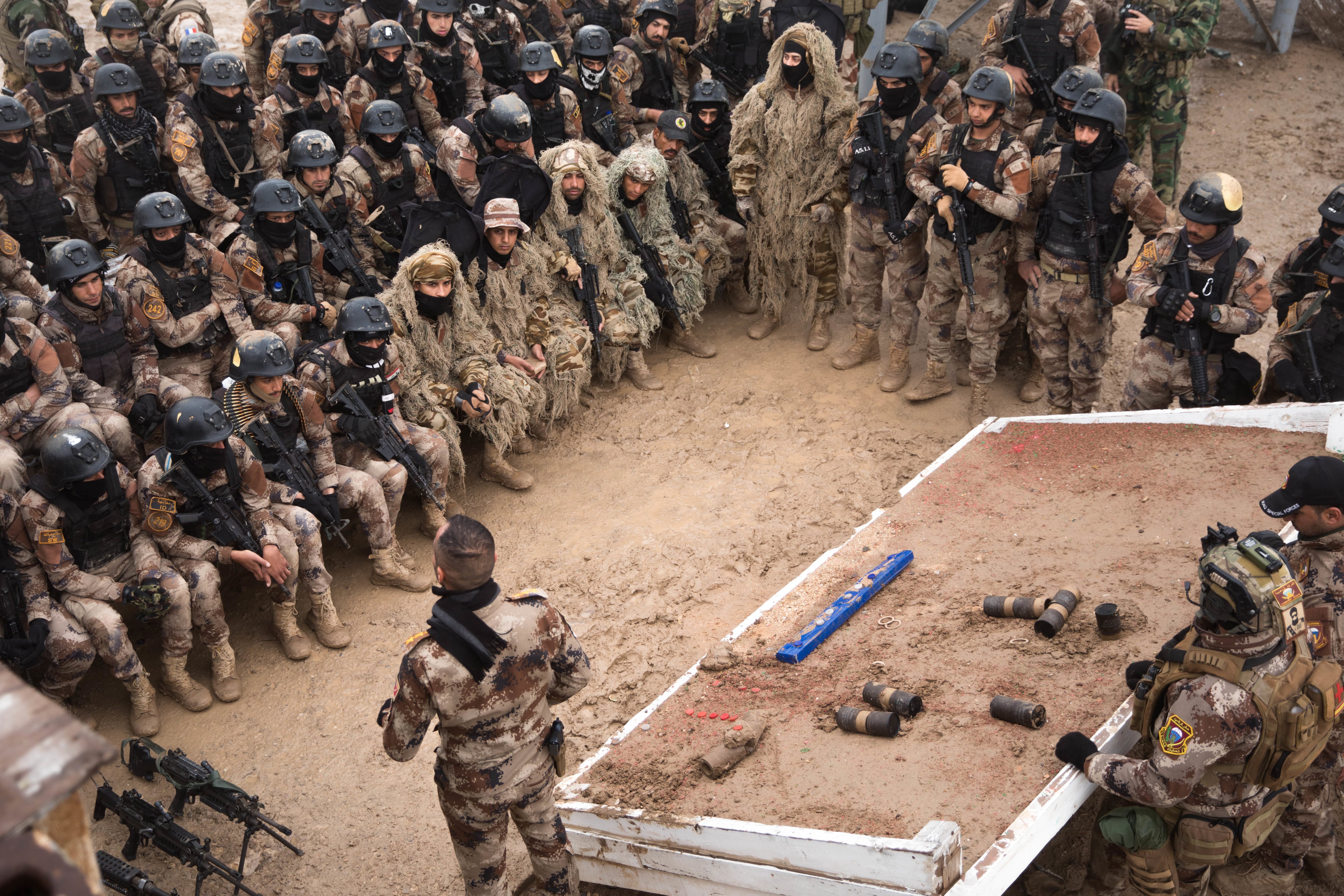Due to lax security, shoddy record keeping and a general lack of accountability, pharmacies and medical warehouses in U.S. Central Command could have lost prescription drugs, including opioids, over the past five years without a clue as to which ones or how much.
A Defense Department Inspector General report released Tuesday details a host of problems at eight CENTCOM medical treatment facilities inspected by the OIG last year. Some lacked security cameras, many did not conduct mandatory inventories, one had 28,594 Valium injectors in storage but didn’t know where they came from, and another left its pharmacy door open and the safe storing controlled pharmaceuticals unlocked.
As a result of the accountability and safeguarding deficiencies identified, “the controlled and non-controlled pharmaceuticals at these locations are susceptible to loss, theft, abuse and diversion,” investigators wrote. “Controlled pharmaceuticals are particularly vulnerable to diversion for illicit use. Non‑controlled pharmaceuticals, which are pilferable and sometimes expensive, may be used for recreational use.”
“Improper use of these pharmaceuticals can degrade military operations and damage the lives, safety and readiness of military personnel,” the report stated.
The problems uncovered during the investigation weren’t limited to the facilities that were audited, investigators wrote.
“These deficiencies … occurred because USCENTCOM’s existing guidance did not provide a unifying method for U.S. military forces within the USCENTCOM AOR to account for and safeguard pharmaceuticals in accordance with theater, service, and unit-level specific processes,” the report states.
The IG report did not list specific amounts of medications, either controlled or non-controlled, that were missing, but noted that CENTCOM had not had such a review in at least five years.
“Without properly conducting inventories, USCENTCOM would not be able to determine whether losses occurred or determine the exact amount of losses of controlled and non-controlled pharmaceuticals” at each military treatment facility, MTF medical logistics facility, U.S. Army Medical Materiel Center-Southwest Asia warehouse or the three USAMMC-SWA Forward Logistics Elements in Qatar, Kuwait, and Afghanistan, the report noted.
RELATED

Some of the problems have been fixed.
New inventories were put in place, documents and checklists updated. But simple solutions, such as working security cameras, that were noted nearly a year ago, had not been replaced by July, when inspectors revisited facilities.
Inspectors traveled to eight of 44 such locations in CENTCOM to conduct their review:
• Area Support Group–Qatar Troop Medical Clinic (Army)
• Bagram Veterinary Treatment Facility in Afghanistan (Army)
• Camp Buehring TMC in Kuwait (Army)
• Craig Joint Theater Hospital in Afghanistan (Air Force)
• Al Udeid Air Base Role II MTF in Qatar (Air Force)
• NATO Role III MMU in Afghanistan (Navy)
• U.S. Army Health Clinic-Kuwait in Kuwait (Army)
• U.S. Military Hospital–Kuwait (Army)
Those nearly 29,000 Valium injectors were found by inspectors at the Bagram, Afghanistan, warehouse, but “with no records to indicate who owned it, or how or when it got there,” inspectors wrote.
For the non-controlled substances, inspectors noted that last year a 100-percent inventory of the Bagram warehouse showed nearly $194,000 in “unexplained discrepancies.”
While more safeguards should be in place for controlled substances, which have a higher rate of abuse and also can be sold for profit, the non-controlled items also present challenges.
“A bottle of donnatal elixir is worth $1,655.32, and a box of vitamin K-1 vials is worth 1,512.53,” the report noted, citing the Food and Drug Administration.
The “Theater Pharmacist” conducted a review but missed most of what the inspectors found. That’s because the pharmacist was working off an incomplete document checklist that didn’t ask for some of the basic requirements of controlling and safeguarding pharmaceuticals, inspectors wrote.
Bags of half tablets of alprazolam, or Xanax, were found at the Qatar facility, but no records documented who got the other halves, how often or when.
Also, some facilities were simply issuing controlled substances to troops with medical cards, not checking whether they were on the mandatory authorized list of recipients for such medicines.
“Instead they relied on familiarity with personnel and personnel having medical identification rather than verifying that they were authorized to pick up controlled pharmaceuticals,” according to the report.
The inspectors also found expired drugs, for example, 20 vials of fentanyl, five injections of morphine and five vials of morphine at the Qatar facility. According to the report, “personnel stated that they had been too busy and had not had time to document the expired pharmaceuticals on their accountability records.”
Pharmacy and warehouse staff also did not recheck unsealed boxes and mass casualty kits. In August 2019, for example, during an inventory of controlled pharmaceuticals at USMH-K, auditors opened three sealed mass casualty kits and found one that contained four bottles of ketamine instead of five that was on the accountability record dated July 31, 2019.
Ketamine induces a trance-like state while providing pain relief, sedation and memory loss, and is often abused as a recreational drug.
It is also sometimes used to facilitate sexual assault crimes, according to the Drug Enforcement Agency.
Todd South has written about crime, courts, government and the military for multiple publications since 2004 and was named a 2014 Pulitzer finalist for a co-written project on witness intimidation. Todd is a Marine veteran of the Iraq War.





